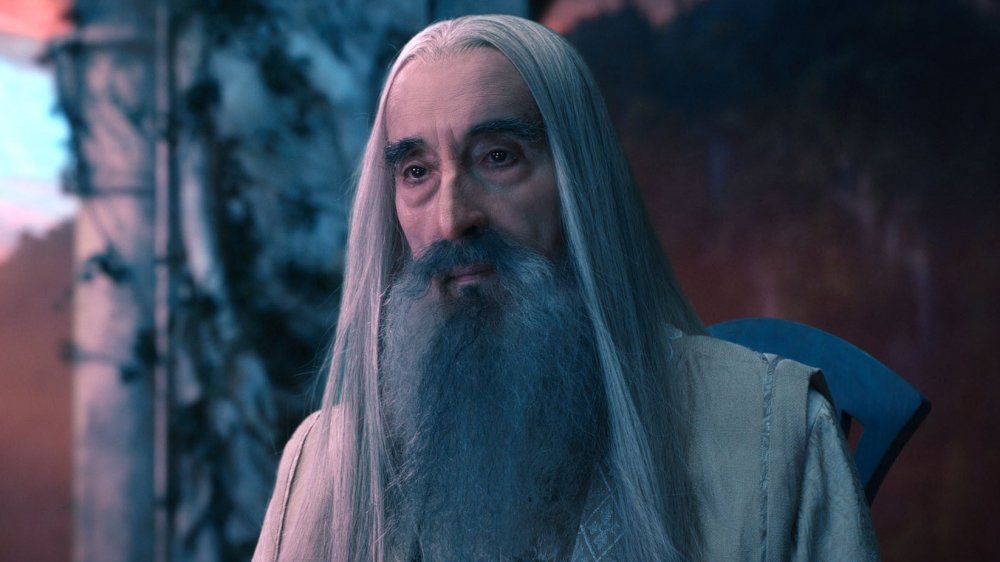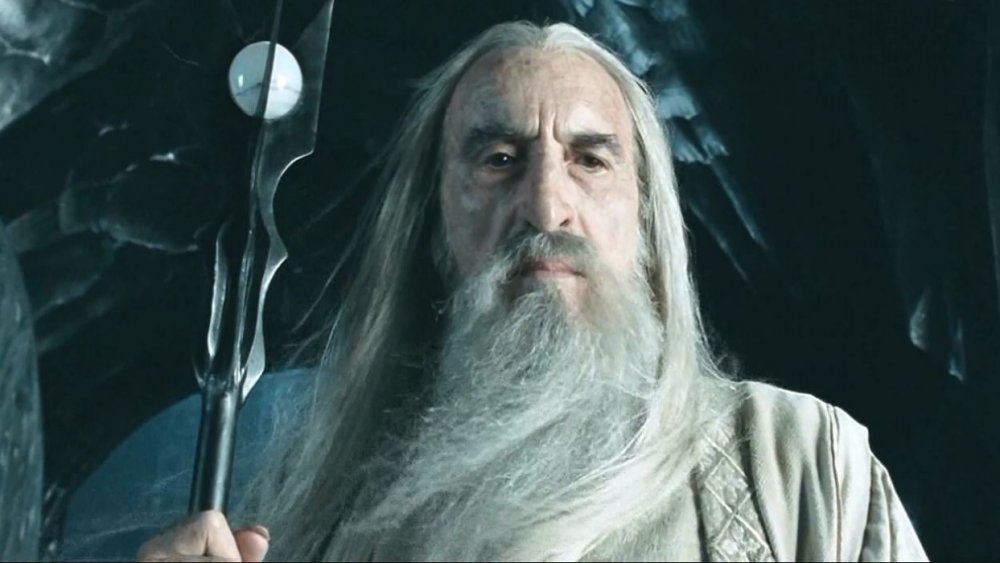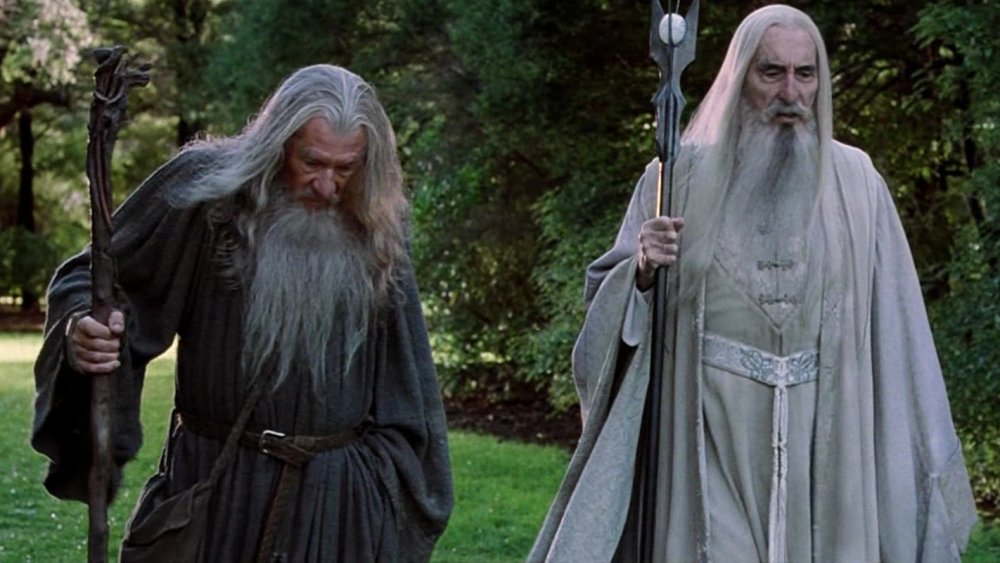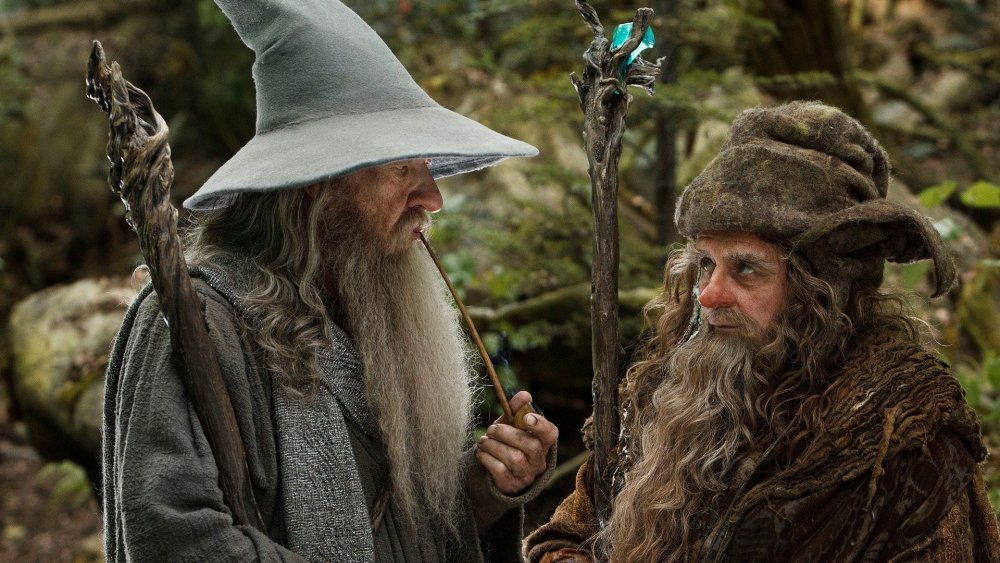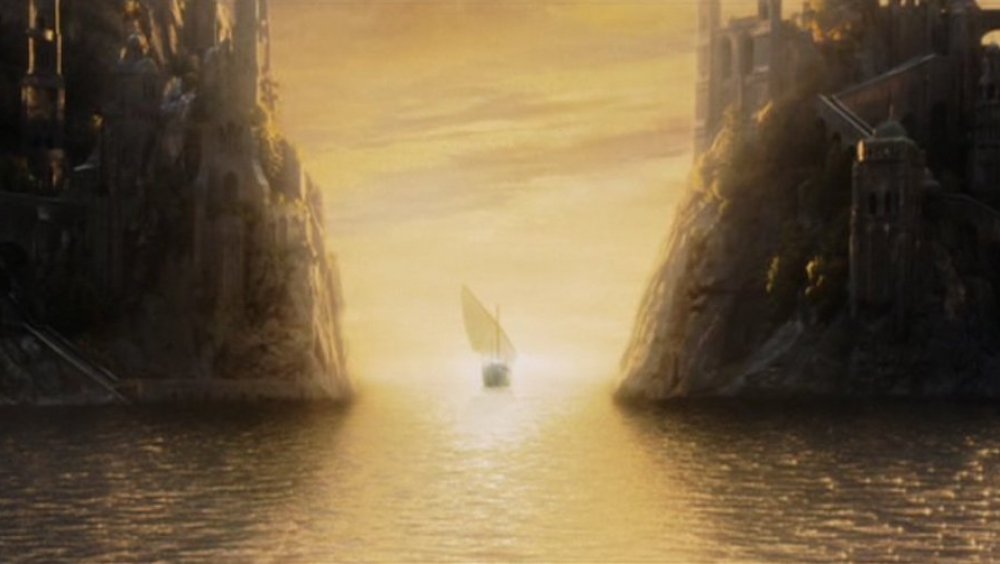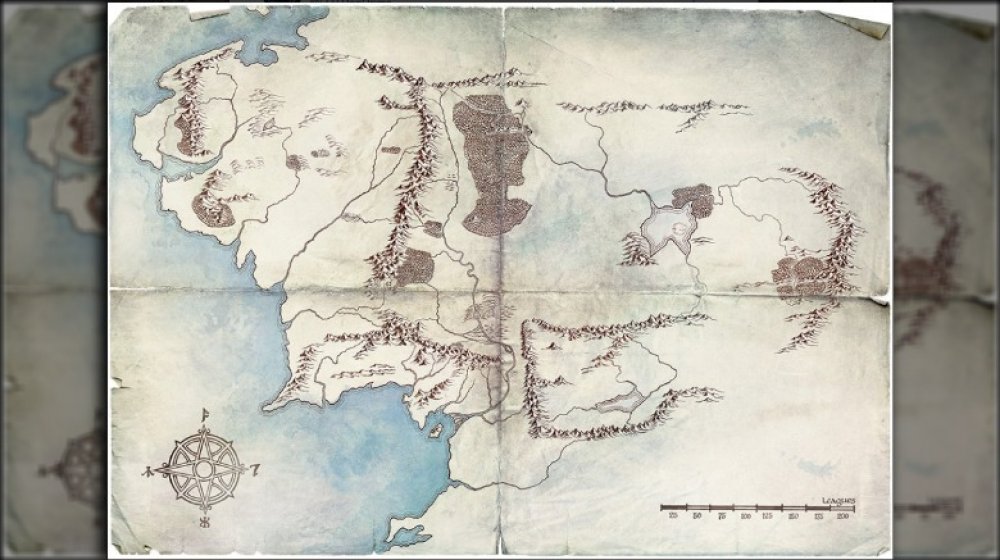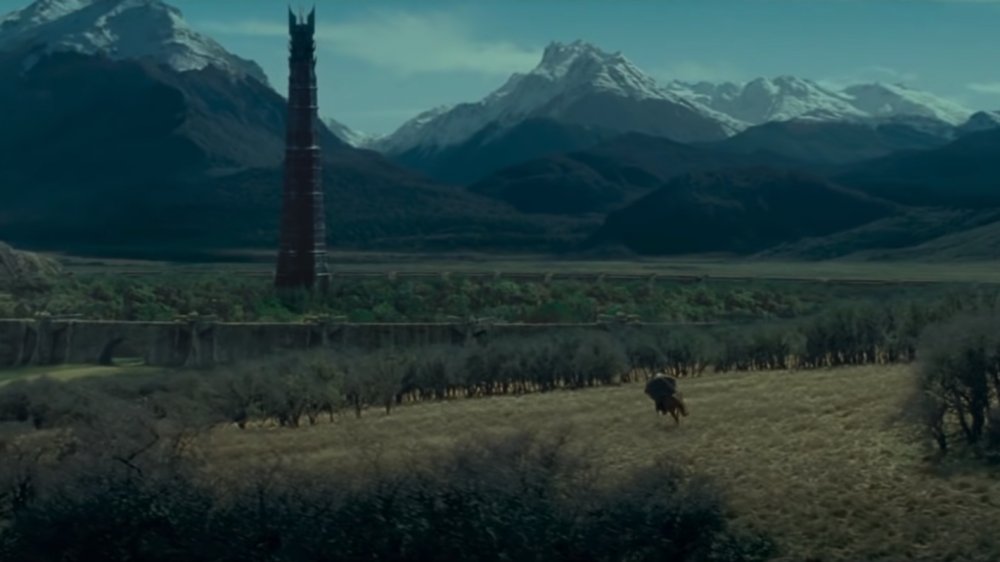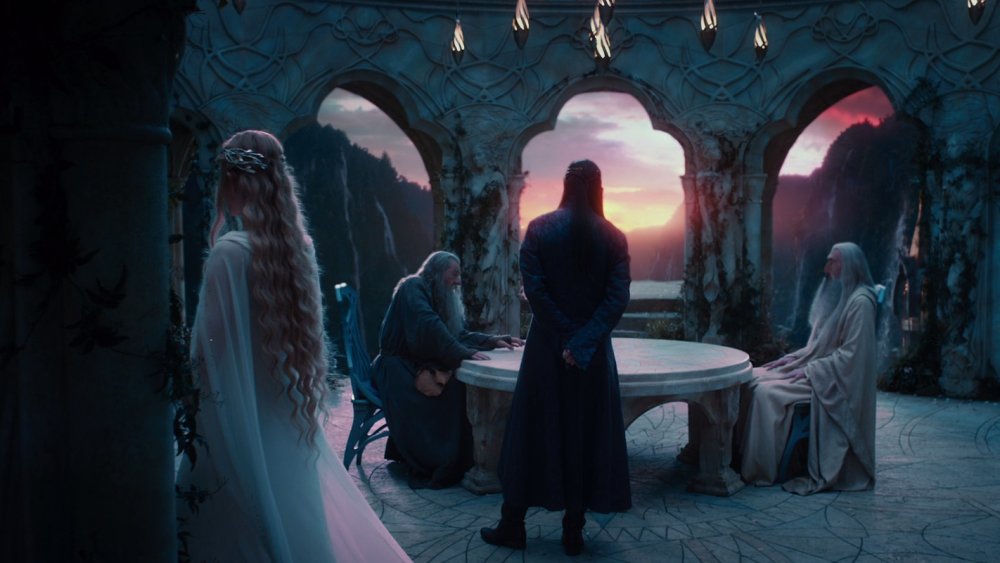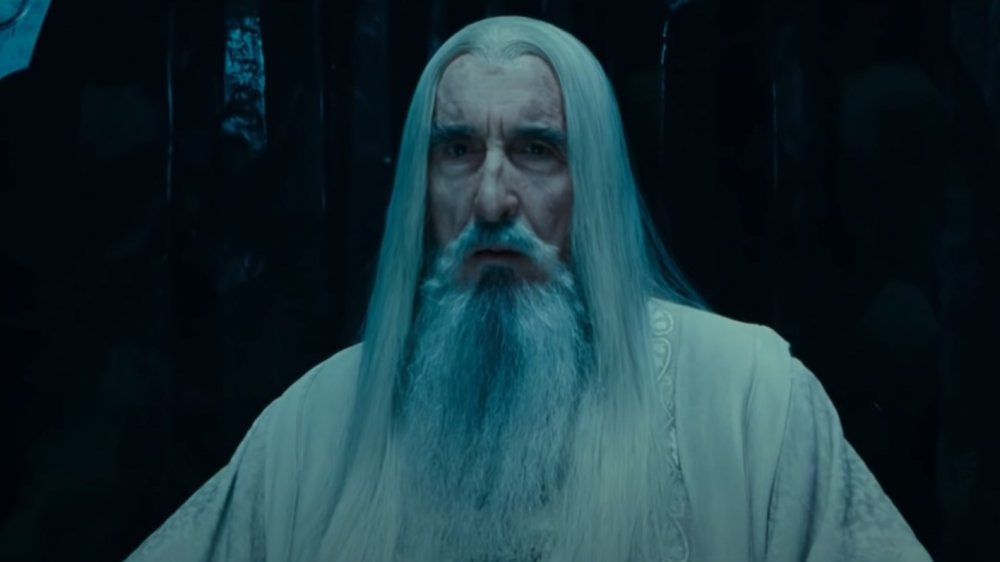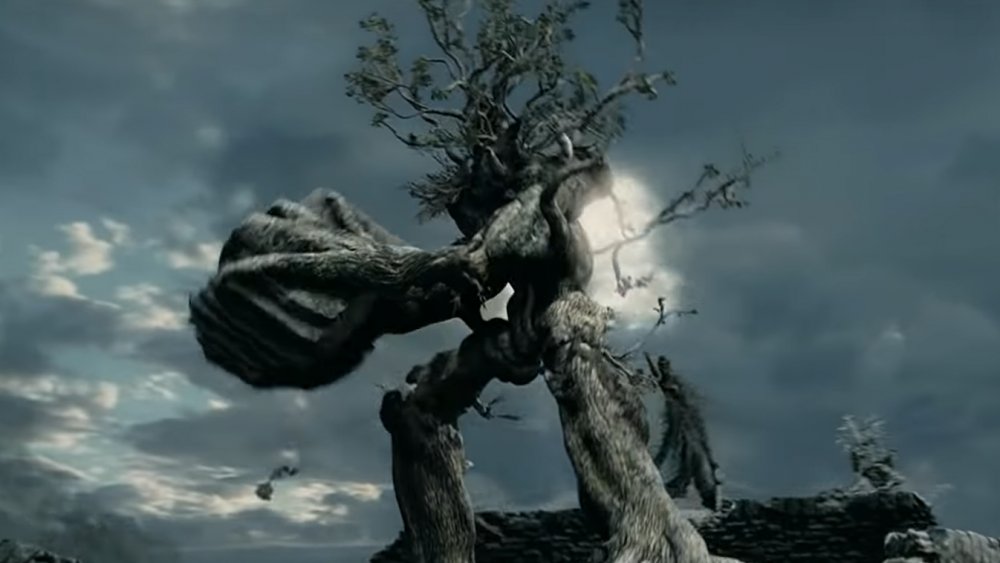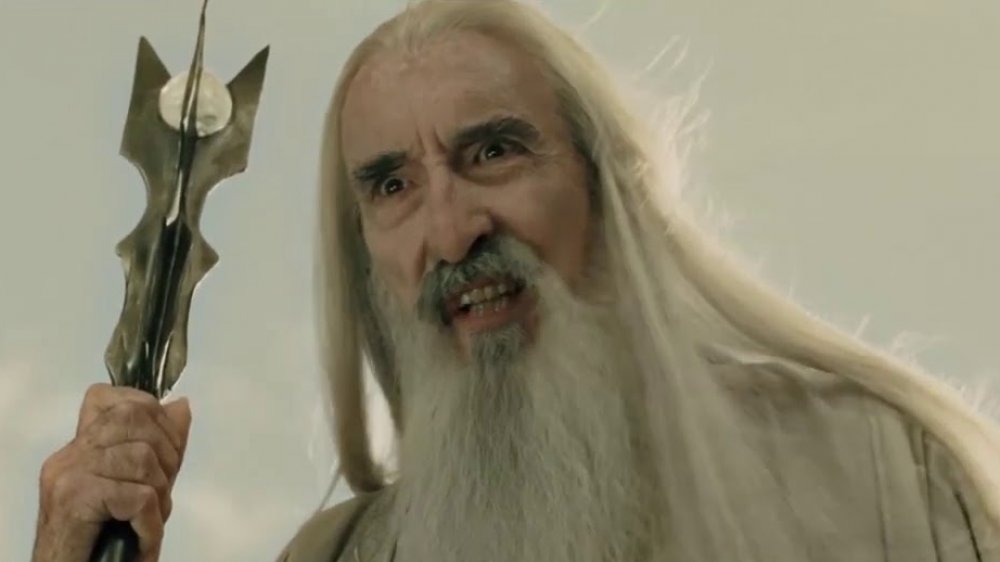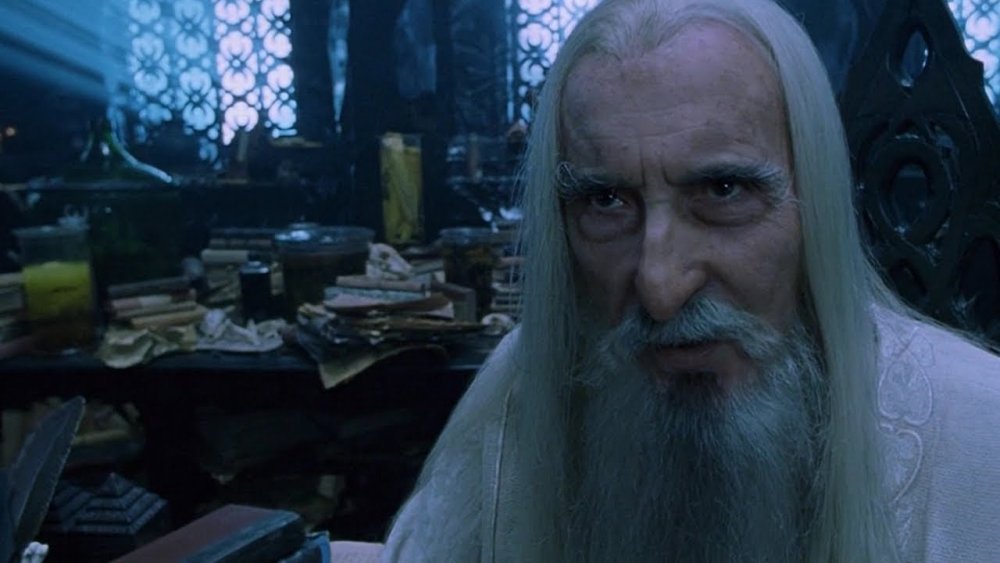Saruman's Backstory Explained
The Lord of the Rings is filled with heroes and villains, and the dark side of the ledger, in particular, is populated by all sorts of interesting personalities. There are fascinating case studies like the Sméagol/Gollum combo, as well as terrifying titans such as the titular Lord of the Rings himself, Sauron.
And then there's Saruman. Timeless spirit, head of the wizards, master of ring lore, and treacherous friend, Saruman ends up becoming one of the primary antagonists of the entire Lord of the Rings story. Second only to Sauron in power and authority, Saruman captures Gandalf, breaks up the Fellowship of the Ring, and tussles with Rohan, the ents, and even the Shire (as fans of the books know well).
The question is, where did Saruman come from? How did he get to the point where he's betraying his friends, experimenting with orc hybrids, and — as Treebeard puts it in The Two Towers — "plotting to become a power?" We were curious enough about the subject that we decided to do some sleuthing into the White Wizard's background. Here are the results, presented for your fantastic pleasure.
Saruman is a Maiar
In The Silmarillion, J.R.R. Tolkien explains that in the beginning, Ilúvatar, the One, creates the world with contributions from the Ainur, angelic spirits that precede the physical world and even time itself. Eventually, many of these spirits descend into creation, with 14 of the superpowered beings becoming known as the Valar, the primary guardians of the world. Countless others join them, becoming known by the subcategory of the Maiar.
Most of the Maiar remain out of sight. However, over time, a handful of them come to play very important roles in Middle-earth's long history. Two of the Maiar are chosen to guide the sun and the moon. Another Maiar named Melian marries an elf-king, and together, they found the line that eventually spawns major characters like Elrond and Aragorn. Sauron himself is even a Maiar, and he's listed amongst the heavenly host before he joins the dark side in the earliest days. The Balrogs are also considered demonic counterparts to the angelic order of the Maiar — i.e., they're Maiar that have gone bad. What does all of this have to do with Saruman? Simple — Saruman is a Maiar, too.
Saruman's early life
Before walking Middle-earth in his old man form, Saruman lives for ages as one of the Maiar. During his time as a pure, immortal spirit, he goes by the name Curumo. He initially descends into Middle-earth during its creation, and unlike Sauron, he actually remains faithful to the Valar throughout all of the long years that follow.
At the end of the Second Age, the Dark Lord Sauron is defeated when the One Ring is cut from his hand — as seen in the opening sequence of The Fellowship of the Ring. This leaves Middle-earth with a substantial period of peace and quiet. In fact, the next thousand years of the Third Age are fairly calm. Eventually, though, the Dark Lord Sauron begins to stir again, and just as that happens — hey, presto! — a posse of old men dressed in robes and rags coincidentally arrives out of nowhere with the express mission to resist him. The group is led by Saruman, and its members are known as the "Istari," or the wizards. Who sent them? Why, the Valar themselves, of course.
He was an eager volunteer
At some point between the Second and early Third ages, a council is called by the Valar, and the guardians decide to proactively aid the good people of the world against the threat of Sauron. However, the Lords of the West know that using raw, open-ended spiritual power could cause more damage than good. They'd already done so during the War of Wrath during the First Age, and it literally sank a portion of the world into the oceans.
As an alternative to brute force, they come up with the idea to funnel several of the Maiar's dynamic otherworldly power into physical, restricted, old bodies that dull their supernatural abilities and dim their understanding. Even with this extremely limiting condition, Saruman is amongst the first two Maiar to openly volunteer for the mission. In Unfinished Tales, it specifically points out that the spirit Olórin (Gandalf) humbly claims that he's afraid of Sauron and shouldn't be sent, whereas Curumo is ready to take on Sauron from day one.
This interesting initial tension between the future Gandalf and Saruman is furthered by the fact that Saruman is extremely powerful and is considered the natural leader of the bunch. In The Fellowship of the Ring, Gandalf even refers to him as the chief of the wizards. Nevertheless, when he's chosen, it's made clear that Gandalf has a quiet power that puts him on par with Saruman, even if he doesn't choose to show it.
Meet the Middle-earth wizards
Now, before we go any further, it's important to explain a little bit about Tolkien's wizards. Unlike the commonplace magic-wielders of fantasy and folklore, these wizards are a finite number of individuals. Only five are ever named — Saruman, Gandalf, Radagast, and the two Blue Wizards, Alatar and Pallando. This quintet is chosen with the express purpose of resisting Sauron's resurgence of power during the Third Age.
Why the wizened, old bods, though? Well, in Tolkien's posthumously published book Unfinished Tales, it explains that the wizards "must be mighty, peers of Sauron, but must forgo might, and clothe themselves in flesh so as to treat on equality and win the trust of elves and men." In The Return of the King, it also explains that "they were forbidden to match [Sauron's] power with power, or to seek to dominate elves or men by force and fear." In other words, wizards are powerful Maiar who are forced to restrain themselves with mortal bodies and must follow express orders to help, not dominate, the enemies of Sauron. And considering Saruman's eventual treachery, it's a good thing the Valar took that precaution.
Saruman arrives in Middle-earth
At this point in the story, Curumo the Maiar has lived and labored with the Valar for tens of thousands of years. Around the late Second or early Third ages, he's chosen as one of the five wizards, and he's clothed in a mortal form and sent to Middle-earth to help orchestrate Sauron's defeat.
It's interesting to note that Tolkien's writings and references of the origins of the wizards tend to vary in minor details. For instance, it appears that Saruman is "obliged" to bring the wizard Radagast the Brown with him when he goes to Middle-earth, even though he already looks down on his brown-clad compatriot — a contempt that continues to negatively color their relationship far into the future. When Saruman arrives in Middle-earth, though, Radagast is nowhere in sight. In Unfinished Tales, the arrival is explained thusly: "The first to come was one of noble mien and bearing, with raven hair, and a fair voice, and he was clad in white."
Discrepancies aside, Saruman immediately gives off impressive vibes, earning the moniker Curunír, meaning "the Man of Skill" or "Man of Craft," which translates in the tongues of Northmen as the familiar "Saruman." The text also mentions that "great skill he had in works of hand, and he was regarded by well-nigh all ... as the head of the Order." In comparison, Gandalf is immediately seen as a wanderer and earns the much tamer nickname "the Grey Pilgrim."
Saruman travels ... a lot
During the first 1,500 years of his time in Middle-earth, not much is known about Saruman's doings. However, in the appendix of The Return of the King, we get the tiny hint that he "journeyed often into the East."
This is interesting, since that's the same place that the two Blue Wizards famously head, taking them out of sight and right out of the story itself. Tolkien only gives a few conflicting hints about their fate. Earlier in his life, the author initially let it be known that they likely founded secret cults and failed in their calling to resist Sauron (who spends a lot of time actively dominating the eastern portion of the continent).
In later writings, Tolkien began to change his tune, pointing out that perhaps the Blue Wizards were actually instrumental in preventing Sauron from using the power of the Easterlings in his bid to crush the West. Either way, once they're swallowed up by the unknown East, the pair of body-bound Maiar never receive any real closure. Unlike his azure companions, though, Saruman manages to return to the West, and judging from the words "journeyed often," he may have even made regular trips back and forth across the continent. Nevertheless, after a millennium and a half of wandering, the White Wizard finally decides that it's time to head back west and settle down once and for all.
The wizard settles down
It isn't until roughly 1,500 years after his arrival in Middle-earth that we begin to hear more about Saruman's doings. Returning from long travels in the East, the wizard quickly becomes a force to be reckoned with in the western portions of the continent. He spends countless years studying lore — especially about the Rings of Power and Sauron. In fact, in Unfinished Tales, it even states that "he returned from his many journeys and came into the realm of Gondor and there abode," indicating that he may have spent a good amount of time researching in the same archives of Minas Tirith that Gandalf would visit in The Fellowship of the Ring.
Eventually, the wizard is also given permission to use the tower of Orthanc in Isengard as his own personal fortress — which, talk about a heck of a gift. This is bestowed on him by the steward of Gondor, who considers it a bonus to have a wizard guarding part of his borders. In later years, as Gondor's power waned, Saruman would simply take over the tower as his own. Incidentally, upon moving into Isengard, Saruman also finds one of the seeing stones called the Palantír ... and decides to keep it a secret. He's also given a position on the newly formed White Council and is even made its leader — although Galadriel, who's also on the council, wishes to choose Gandalf as the leader, earning Saruman's enmity for the vote of no confidence.
Saruman breaks bad
Throughout all of this activity, there's one theme that begins to show up in all of Saruman's activities — the desire for power. In The Silmarillion, when he's chosen instead of Gandalf to lead the White Council, it says that Saruman's "pride and desire of mastery was grown great." It also lays out the damning statement that "Curunír had turned to dark thoughts and was already a traitor in heart," adding that "he desired the Great Ring, so that he might wield it himself and order all the world to his will." It goes on to explain that in all of his study of the Dark Lord, he had come to view Sauron as a rival to replace rather than an enemy to destroy.
Over this time, Saruman begins to play his enemies and his friends against one another. He realizes that the One Ring is likely going to make its presence known if it feels its master calling, so he delays the White Council from attacking Sauron — who's holed up in Mirkwood at the time, under the guise of the Necromancer. Eventually, though, he realizes that the Dark Lord is closer to getting the Ring than he thought. Fearing that the enemy will find the Ring before he can, he gives the green light and the Council drives the Necromancer out of Mirkwood — an event that can be awkwardly witnessed via the ghoulish duel from The Hobbit trilogy.
Saruman and the War of the Ring
At this point, Saruman is on the cusp of becoming a full-blown traitor. He's actively working against his friends and secretly aiding their enemies. His spy network stretches across Middle-earth, and he's even begun to catch onto the fact that Gandalf is aware of something going on in the Shire. Then, around the year 3000 of the Third Age, he uses his seeing stone a little too liberally and accidentally catches a glimpse of Sauron. The encounter leaves him as one of the Dark Lord's vassals, although he still remains a servant with a secret agenda of his own.
He begins to breed his own race of soldiers known as the dreaded uruk-hai, forges his own minor rings of power, and ditches his white robes for colorful ones. In The Fellowship of the Ring, when Gandalf arrives at Isengard to ask him for advice, he finally takes off the mask and reveals himself as "Saruman the Wise, Saruman Ring-maker, Saruman of Many Colours!"
At this point, we've reached the primary Lord of the Rings narrative. During the rest of The Fellowship of the Ring, Saruman serves as an antagonist from afar. He keeps Gandalf captive for a time, his spies encounter Frodo and company in Bree, his birds pester the Fellowship as they journey south, and his uruk-hai attack and scatter the company as they travel down the Great River. At that point, things begin to really heat up.
The wizard is defeated
Saruman is the primary antagonist for the entire first half of The Two Towers. The story starts with Merry and Pippin being spirited away toward Isengard by the wizard's soldiers. Aragorn, Gimli, and Legolas pursue them, but the footrace ends when the Riders of Rohan appear on the scene, kill the uruk-hai, and drive Merry and Pippin into the arboreal embrace of Treebeard and the ents. From there, the hobbits stir up the tree-folk, who've suffered cruelly from the axes and furnaces of Isengard, and the whole lot of them head off to attack Saruman's fortress.
In the meantime, Aragorn, Gimli, and Legolas encounter Gandalf, and the four friends head off to rouse King Théoden from his Wormtongue-induced dotage. They succeed, and the armies of Rohan then rally and rush off to fight Saruman's approaching hordes of uruk-hai. The Rohirrim reach the fortress of Helm's Deep just in time, and there, they manage to barely defeat Saruman's armies in the Battle of Helm's Deep.
Saruman's cinematic ending
After barely holding off Saruman's assault in Rohan, the heroes head to Isengard. There, they cross paths with Merry, Pippin, and the ents, who've been busy sacking and then flooding the old Gondorian fortress. While they're able to absolutely devastate Isengard itself, the ents are unable to make a dent in the magically indestructible walls of the tower of Orthanc itself, and there, a shocked and defeated Saruman is waiting, like a wounded animal in a trap.
Eventually, our heroes confronts Saruman, and in the encounter, he's further dismayed when Gandalf the White simultaneously casts him out of the Order of the Wizards and the White Council, breaking his wizard staff, to boot. In the Peter Jackson films, this is the point where Saruman meets his physical ending. The hate-filled villain is literally backstabbed by Wormtongue as he debates with Gandalf from the top of the tower of Orthanc. As he dies, he falls off of the tower and hurtles to his mortal death hundreds of feet below. While his spirit presumably lives on, Curumo's role as the wizard Saruman officially comes to an end at this point.
Sharkey Saruman and the Shire
It turns out that Peter Jackson's version of Saruman wraps up shop a bit early. In Tolkien's source material, Saruman lives through the confrontation with Gandalf. He's left to fester in Orthanc, and eventually, Treebeard shows pity on him and lets the broken wizard leave, with Wormtongue following like a whipped dog. The pair of beggars wander through Middle-earth and are even overtaken by the hobbits, Gandalf, and Galadriel while they're heading home from the War of the Ring. During this meeting, Saruman rejects their help yet again and sends them on their way.
As fans of the books know well, when the hobbits get back to the Shire, they discover that ruffians have turned it into an industrial nightmare, ruling over the region with an iron fist and forcing their hobbit families and friends to work their fingers to the bone. The heroes rally their people and oust the invaders, only to run into Saruman one last time right at on the doorstep of Bag End. Here, they discover that it was none other than Saruman himself, masquerading under the nickname "Sharkey," who'd overseen the purposeful destruction of the Shire while they'd been away on their quest.
Saruman's actual death
Saruman does have a physical death in the books, and it does involve Wormtongue, but it doesn't showcase an epic drop from a mile-high tower. Instead, in his final exchange with the hobbits in front of Bag End, the bitter old man that once was Saruman the White jeeringly accuses Wormtongue of killing Frodo's cousin, an act that he'd forced his cringing servant to do. This proves to be the straw that breaks the camel's back. The wretch jumps on his hated master's back and slits his throat before he himself is shot down by hobbit archers.
The Return of the King describes Saruman's last mortal moments, saying, "About the body of Saruman a grey mist gathered, and rising slowly to a great height like smoke from a fire, as a pale shrouded figure it loomed over the hill. For a moment it wavered, looking to the West; but out of the West came a cold wind, and it bent away, and with a sigh dissolved into nothing." It adds that "long years of death were suddenly revealed in [his mortal body], and it shrank, and the shriveled face became rags of skin upon a hideous skull." A tragically appropriate ending for the treacherous, power-hungry Maiar.
